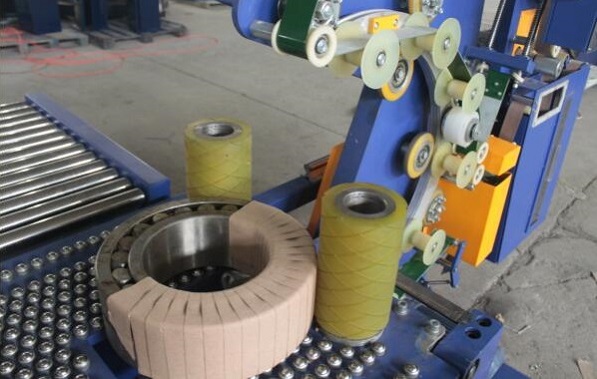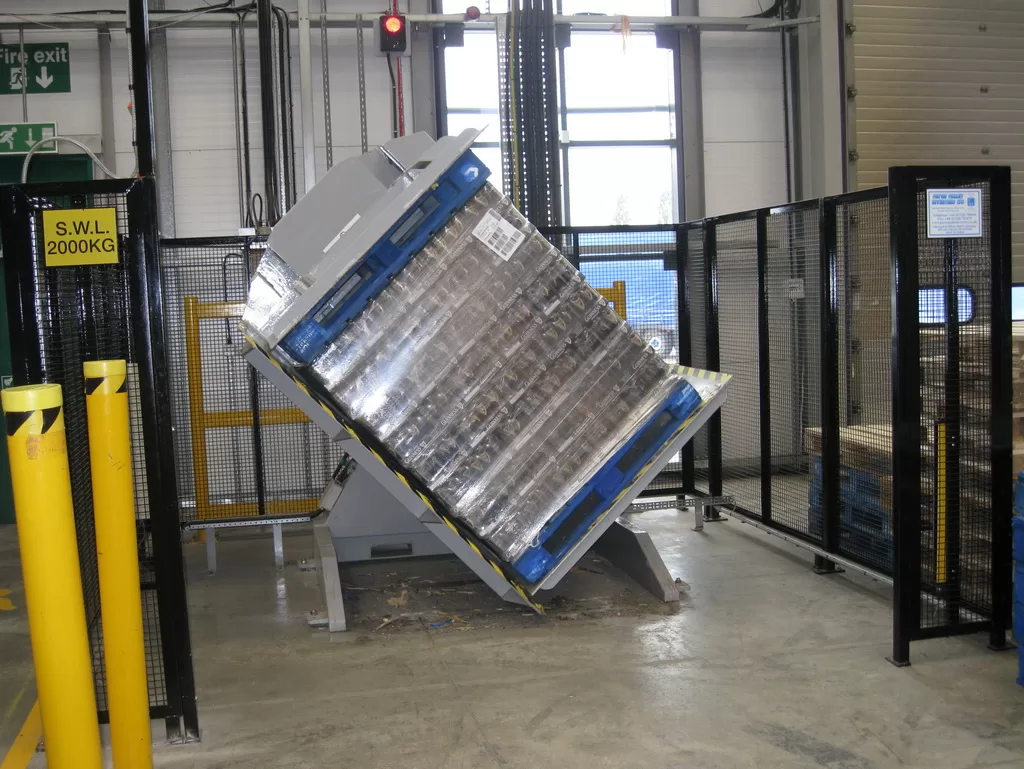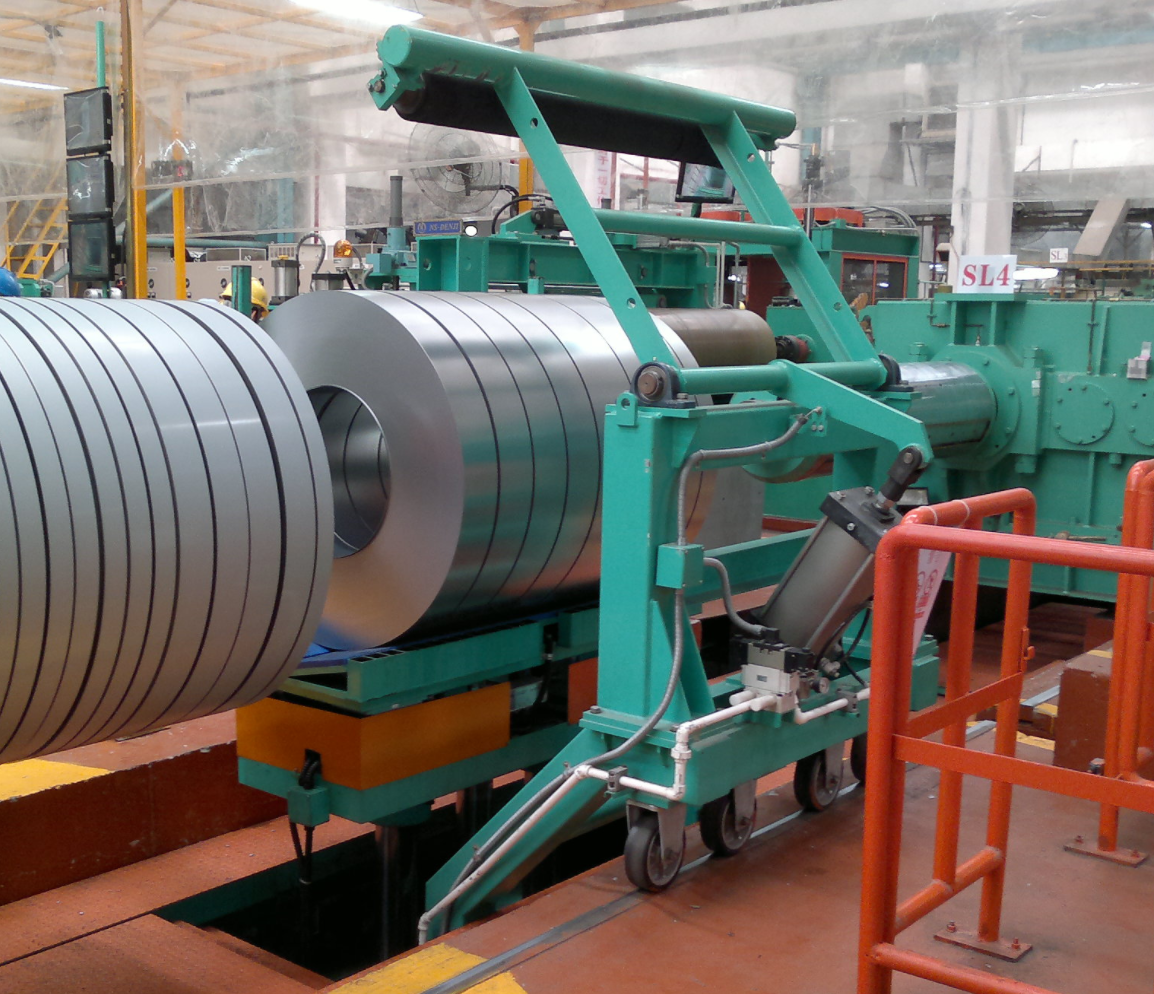The Impact of Coil Packing on Shipment Efficiency
Are damaged goods and costly delays disrupting your supply chain? Poor coil packaging isn’t just a quality issue; it’s a significant bottleneck, exposing valuable coils to transit damage and environmental degradation. This leads to inefficient sorting, rework, and customer complaints. Effective coil packaging is a critical investment in streamlined logistics and operational efficiency.
Effective coil packaging significantly boosts shipment efficiency by minimizing product damage, reducing transit delays, and streamlining handling processes. Preventing rust and physical damage through robust packaging eliminates costly reprocessing, sorting, and returns, ensuring coils arrive ready for immediate downstream use. This proactive approach optimizes logistics and enhances overall supply chain throughput.
Beyond safeguarding product quality, mastering coil packaging protocols is essential for optimizing supply chain efficiency. It’s about ensuring that heavy, valuable industrial products like steel coils move through complex logistical networks without incurring the delays and costs associated with damage. Let’s delve deeper into how strategic packaging drives efficiency from mill to final application.
Preventing Damage During Transit & Handling: Boosting Throughput
Are physical impacts during transit causing unexpected delays and expenses? The journey of a coil is fraught with potential physical hazards, from lifting and stacking to transportation across vast distances. Inadequate physical protection leads to damaged coils, resulting in production hold-ups, material waste, and significant financial losses – all major inefficiencies.
Physical protection during handling and transit is paramount for shipping efficiency. Robust packaging materials like heavy-duty wraps, edge protectors, and secure strapping prevent dents, abrasions, and deformation. By absorbing shocks and preventing shifting, these measures ensure coils arrive physically intact, eliminating the need for time-consuming inspections, sorting, and rework at the destination.
Layered Defense for Seamless Transit
Effective physical protection relies on creating a multi-layered system that cushions, absorbs impact, and prevents uncontrolled movement. This involves more than just a basic wrap; it’s about integrating various components that work together to safeguard the coil throughout its journey. This approach directly impacts logistical efficiency by reducing the incidence of transit-related issues.
Key elements of a layered physical protection system include:
- Individual Coil Wrapping: High-strength films (like PE or PVC) or fabrics tightly wrapped around the coil provide the first line of defense against surface abrasion, dust, and minor impacts. Stretch film is particularly effective as it conforms tightly, providing good containment and preventing unwinding during handling, which could otherwise lead to dangerous and inefficient situations.
- Edge and Corner Protection: The edges and corners of coils are highly vulnerable to impact damage. Using cardboard, plastic, or steel edge protectors absorbs forces and prevents crushing or bending. Damage to edges can render the entire width of the coil unusable, leading to scrap and wasted material – a clear inefficiency.
- Securing Methods (Strapping): Steel or heavy-duty polyester strapping is vital for securing the coil itself (preventing telescoping or unwinding) and fastening it securely to pallets or transport units. Proper strapping eliminates movement during transit, a primary cause of impact damage and cargo shifting, which can cause severe delays and require extensive claims processing. Automated strapping machines ensure consistent tension for maximum load stability.
- Palletization and Skids: Placing coils on sturdy pallets or skids facilitates efficient handling using forklifts and cranes. It also keeps the coil off the ground, preventing contact damage and contamination that might require cleaning or rework upon arrival.
- Void Filling (Dunnage): In containers or trucks, dunnage bags or other void fillers prevent coils from shifting and impacting each other or the container walls. This is crucial for preventing catastrophic damage, especially during dynamic transit conditions like sea voyages. Preventing cargo shifts avoids costly and time-consuming incident investigations and insurance claims.
- Container Liners: For containerized shipments, liners add an extra barrier against moisture and contamination. A cleaner, more controlled environment reduces the risk of damage that could require inspection and cleaning upon arrival, adding unnecessary steps to the process.
Implementing these physical protection methods correctly, often through automated processes for consistency and speed, ensures coils arrive physically intact. This directly translates to higher usable product yield, fewer rejections, and a significant reduction in the time and cost associated with handling and resolving transit damage claims. It’s a fundamental step in building an efficient supply chain.
| Damage Type | Impact on Shipment Efficiency | Primary Packaging Solution | Efficiency Gain |
|---|---|---|---|
| Dents/Deformation | Rework, Scrap, Production Delays | Edge Protectors, Sturdy Pallets | Reduced waste, Faster downstream processing |
| Surface Abrasions | Rework (painting, finishing), Rejection | Protective Wraps (Film/Fabric) | Less need for surface prep, Higher acceptance rates |
| Edge Damage | Reduced usable width, Scrap, Processing issues | Edge/Corner Protectors | Maximize usable material, Smooth production flow |
| Cargo Shifting | Catastrophic damage, Transit delays, Claims processing | Strapping, Dunnage, Bracing | Minimize incidents, Faster, safer transit |
| Contamination | Cleaning required, Production delays, Rejection | Protective Wraps, Container Liners | Reduced cleaning time, Product ready for use |
The Silent Threat: Corrosion and its Efficiency Costs
Is rust creating hidden inefficiencies in your workflow? Unprotected coils are highly susceptible to environmental hazards like moisture, humidity, and pollutants. These factors can quickly initiate corrosion, degrading surface and structural integrity. This silent threat doesn’t just impact quality; it introduces massive inefficiencies through costly reprocessing, rejection, and material waste.
Corrosion is a major efficiency drain in coil shipments. Rust and oxidation degrade product quality, requiring time-consuming and expensive reprocessing or leading to outright rejection. Effective packaging employing barriers and Vapor Corrosion Inhibitors (VCI) prevents rust formation, ensuring coils are ready for immediate use upon arrival, thereby eliminating inefficient remediation steps and associated delays.

VCI Technology: An Efficiency Enabler
Protecting coils from corrosion requires more than just a simple wrap; it demands active protection. VCI technology is a cornerstone of modern coil packaging, specifically engineered to prevent rust without requiring messy, time-consuming application and removal processes like traditional oils. This makes VCI a significant efficiency enabler in the supply chain.
VCI technology works by releasing protective vapors within the enclosed package. These vapors form a microscopic, invisible layer on metal surfaces, preventing corrosive elements like oxygen and moisture from initiating rust. This active protection eliminates the need for sticky, labor-intensive rust preventative oils, which must be cleaned off before use – a major source of inefficiency at the receiving end.
Key aspects of VCI technology’s impact on efficiency:
- Clean Arrival: VCI packaging delivers coils clean and ready for immediate processing or sale. No degreasing or cleaning is needed, saving significant time, labor, and materials at the destination facility.
- Comprehensive Protection: VCI vapors penetrate difficult-to-reach areas like the coil’s inner diameter and between wraps, providing complete protection that passive barriers or applied coatings might miss. This reduces the likelihood of hidden rust that could be discovered late in the process, causing unexpected delays and rework.
- Simplified Application: VCI materials like paper and film are relatively easy to apply, whether manually or through automated systems. This contrasts with the labor-intensive spraying, dipping, or brushing required for traditional rust preventative oils.
- Extended Protection: High-quality VCI solutions can provide protection for months or even years, crucial for long-term storage or extended international transit. This reliability reduces the risk of damage over time, preventing the need for unexpected re-packaging or replacement due to in-storage degradation.
Choosing the right VCI material and ensuring proper application are critical for maximizing these efficiency benefits. The VCI paper vs. film choice often depends on the coil’s structure and transit requirements.
| Feature | VCI Paper | VCI Film (Poly) | Efficiency Implication |
|---|---|---|---|
| VCI Diffusion | Excellent porosity for rapid vapor release | Good vapor diffusion (requires proper sealing) | Faster initial protection vs. Stronger barrier control |
| Physical Barrier | Moderate (depends on lamination/coating) | High (Excellent moisture/physical barrier) | Less physical protection vs. Robust environmental shield |
| Application | Inner wrap, Interleaving | Outer wrap, Bags, Liners | Targeted internal protection vs. Comprehensive external wrap |
| Cleanliness | Dries clean | Dries clean | Eliminates receiving-end cleaning steps |
| Environmental | Often more recyclable/biodegradable options | Recyclable (check local facilities) | Supports sustainable/efficient waste management |
Using a combination of VCI paper for internal protection and VCI film for external wrapping provides synergistic benefits, ensuring both active corrosion inhibition and a robust moisture barrier. This integrated approach is key to delivering coils in pristine condition, ready for immediate, efficient processing, thereby avoiding the significant time and cost burdens of rust remediation.
Streamlining Operations: Packaging Automation and Best Practices
Is manual packaging slowing down your coil throughput? Achieving optimal packaging efficiency relies not just on selecting the right materials, but on the process of applying them. Manual packaging can be labor-intensive, inconsistent, and become a bottleneck in high-volume operations. Leveraging automation and implementing best practices are key to streamlining this critical step.
Efficient coil packaging operations improve throughput and consistency. Automated packaging lines ensure materials are applied correctly and quickly, reducing labor costs and minimizing human error that could compromise protection. Combining automation with best practices, such as proper handling and storage, creates a reliable system that contributes to overall operational efficiency.
Implementing an Efficient Packaging Strategy
An efficient coil packaging strategy goes beyond material selection; it involves a holistic approach to the entire process, from handling to final securing. Implementing best practices and considering automation can significantly improve throughput, reduce labor costs, and ensure consistent, reliable protection that prevents costly downstream inefficiencies.
Key steps and considerations for an efficient packaging strategy:
- Risk Assessment: Understanding the specific risks (transit time, modes, climate, handling) allows for targeted, efficient packaging solutions, avoiding over-packaging or under-packaging. This prevents wasted material and labor while ensuring adequate protection.
- Material Selection: Choosing the right materials (appropriate VCI, film strength, edge protector type) ensures effective protection without unnecessary cost or complexity.
- Packaging Design and Application: Developing clear, repeatable protocols for each product and destination streamlines the packaging process. Automated coil packaging lines are crucial here, ensuring consistent, tight wrapping and accurate strapping tension quickly and efficiently. They handle various coil sizes and weights, drastically improving throughput compared to manual methods and reducing the risk of errors that lead to rework.
- Securing for Transit: Proper loading and securing within the transport unit (using chocks, bracing, dunnage) is vital for preventing movement and damage. This step, though part of logistics, is enabled by packaging features like sturdy pallets and effective strapping, preventing costly delays and claims.
- Inspection and Quality Control: Implementing checks throughout the packaging process (correct material use, proper sealing, adequate strapping tension) ensures quality and reduces the likelihood of damage. This proactive quality control is far more efficient than dealing with damaged goods at the receiving end.
- Continuous Improvement: Tracking damage rates and packaging performance allows for data-driven refinement of materials and processes, leading to ongoing efficiency gains.
Many inefficiencies stem from preventable mistakes in handling and storage. The "Dirty Dozen" list from the reference material highlights common practices that cause rust and reduce efficiency. Addressing these through best practices is crucial:
| Inefficient Practice | Efficiency Cost | Efficient Solution |
|---|---|---|
| Bare Hand Handling | Fingerprint rust -> Rework, Rejection | Mandate Glove Use |
| Direct Contact with Wood/Corrugated | Contact rust -> Sorting, Rejection | Use VCI Barrier (Paper/Poly) between coil and material |
| Leaving Parts Uncovered | Atmospheric rust -> Cleaning, Rework, Scrap | Always Cover with VCI Paper or VCI Poly Bags |
| Storing Parts in Corrosive Environments (e.g., Heat Treat) | Accelerated corrosion -> Severe Rework, Scrap | Store in Controlled Areas, Protect with VCI |
| Improper Drying After Cleaning | Flash rust, Water staining -> Rework, Rejection | Thorough Drying (Forced air, Heat), Pack Immediately in VCI |
| Dirty Metalworking Fluids/Cleaning Solutions | Swarf/Contaminant induced corrosion -> Rework, Scrap | Regular Fluid Maintenance and Filtration |
| Using Non-Deionized/Public Water | Chlorine/Contaminant induced corrosion -> Rework, Scrap | Use Deionized/Distilled Water |
| Improper pH of Metalworking/Cleaning Fluids | pH-induced corrosion -> Rework, Scrap | Regular pH Monitoring and Adjustment |
| Packaging in High Humidity/Fluctuating Temps | Condensation/Atmospheric corrosion -> Rework, Scrap | Climate Control, Use VCI Year-Round |
| Using Outdated (Messy) Rust Preventatives (Oils) | Cleaning required at destination -> Time/Labor Cost | Switch to VCI (Dry, Clean) |
| Using Incorrect VCI Type | Ineffective protection -> Rust, Rework | Consult Expert, Use Metal-Specific VCI |
| Not Using Enough VCI | Inadequate protection -> Rust, Rework | Follow Coverage Guidelines (1 sq ft VCI / 1-3 sq ft metal) |
Investing in automated systems and training staff on best practices like those above ensures consistent, high-quality packaging application. This not only protects the product but significantly improves the speed and reliability of the packaging process itself, making it a driver of supply chain efficiency rather than a bottleneck.
Tailoring Packaging for Global Supply Chain Efficiency
Exporting coils introduces significant complexity and potential inefficiencies if packaging is inadequate. Longer transit times, exposure to harsh marine environments, multiple handling points, and varying regulations worldwide necessitate specialized packaging solutions. Standard domestic packaging is rarely sufficient for the rigors of international trade, leading to damaged goods, customs delays, and costly disputes – major inefficiencies in the global supply chain.

Specialized export packaging is crucial for global supply chain efficiency. It must withstand extended transit and harsh conditions, particularly marine environments, to prevent damage and delays. Enhanced corrosion protection, robust physical barriers, and compliance with international standards ensure coils arrive globally in optimal condition, enabling smooth customs clearance and immediate use. Effective export packaging prevents costly reprocessing, rejections, and time-consuming claims management associated with damaged international shipments.
Tailoring packaging for global journeys means considering every potential challenge the coil will face. It’s not a one-size-fits-all approach. The mode of transport (sea, air, rail), destination climate, specific product type (e.g., cold-rolled, galvanized, color-coated), and customer requirements all dictate the necessary level of protection.
Key considerations for efficient export coil packaging:
- Enhanced Corrosion Prevention: Longer transit demands more robust VCI solutions, often with higher concentrations or multi-layer structures. Desiccants are also commonly used to absorb moisture, creating a dry microenvironment critical for preventing rust during potentially months-long voyages.
- Moisture Barrier: A high-quality outer wrap providing an excellent moisture barrier is essential, especially for sea freight. Multi-layer PE films or laminates are effective at keeping corrosive salt spray and humidity out, preventing damage that could require extensive cleaning or rework upon arrival.
- Durability: Export packaging materials must be significantly more durable to withstand the stresses of intermodal transportation and multiple loading/unloading cycles across different ports and logistics providers. Stronger strapping, reinforced wraps, and sturdier pallets prevent damage during these frequent handling events.
- Securing within Transport Unit: Proper securing inside shipping containers or rail cars is paramount to prevent catastrophic damage from shifting cargo. Using blocking, bracing, and dunnage specific to the transport mode ensures the load remains stable, preventing delays and costs associated with transit incidents.
- Labeling and Documentation: Clear, durable labeling with handling instructions, product identification, and destination information is critical for smooth logistics and customs processing. Missing or damaged labels and documentation can cause significant delays and fees at borders, hindering supply chain flow.
- Compliance: Packaging must comply with international standards (like ISPM 15 for wooden pallets) and destination country regulations. Non-compliant packaging can lead to rejection, fines, and significant delays, impacting the efficiency of the entire export operation.
Tailored export packaging reduces the risk of costly claims, rejections, and damage to reputation in international markets. It ensures that coils arrive in the expected condition, ready for immediate use or sale, facilitating smoother transactions and more efficient international trade relationships. This level of care is crucial for products like color-coated coils, where surface appearance is paramount and damage would lead to immediate rejection and significant losses.
Conclusion
The impact of coil packaging on shipment efficiency is profound and direct. By preventing damage from corrosion and physical impacts, effective packaging minimizes costly rework, reduces scrap, eliminates transit delays, and streamlines handling at destination facilities. This proactive approach ensures coils move smoothly through the supply chain, arriving ready for immediate use. Investing in appropriate materials, leveraging automation, and implementing best practices are critical steps in optimizing logistics and enhancing overall operational efficiency. Protecting products through robust coil packing line solutions is essential for success in competitive global markets.










